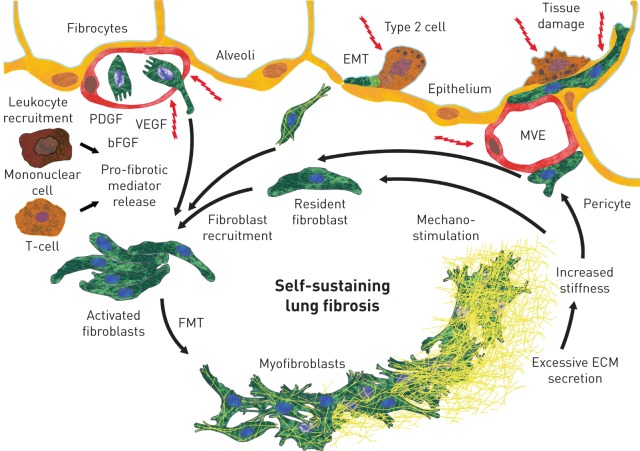FIGURE 1.
Mechanisms known to be involved in the pathogenesis and progression of fibrosing interstitial lung diseases. EMT: epithelial–mesenchymal transition; PDGF: platelet-derived growth factor; VEGF: vascular endothelial growth factor; bFGF: basic fibroblast growth factor; MVE: microvascular epithelium; FMT: fibroblast–myofibroblast transition; ECM: extracellular matrix. Tissue damage may occur at the alveolar epithelial and/or microvascular endothelial sites. Fibroblasts are recruited from resident fibroblasts, circulating fibrocytes, and epithelial cells and fibrocytes undergoing EMT. Growth factors are released by the damaged epithelium and endothelium, and leukocytes are recruited. Mononuclear cells and T-cells release pro-fibrotic mediators. Activated fibroblasts transition to myofibroblasts (FMT), which release excessive amounts of ECM. This results in increased tissue stiffness, which further stimulates fibroblast activation, leading to self-sustaining fibrosis.

